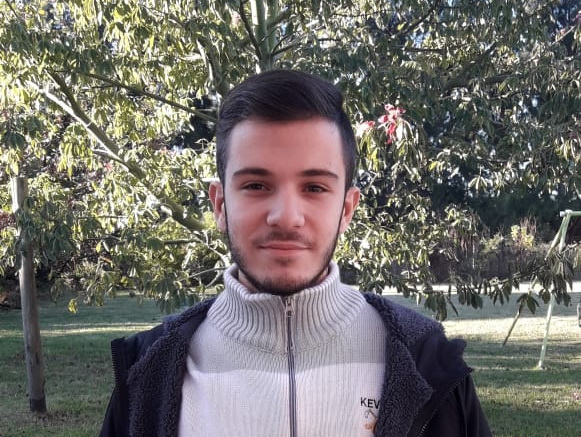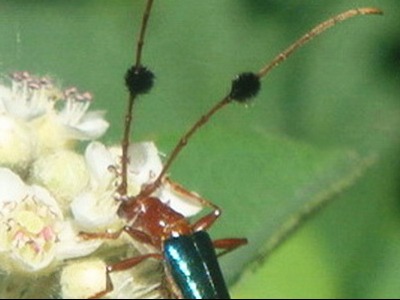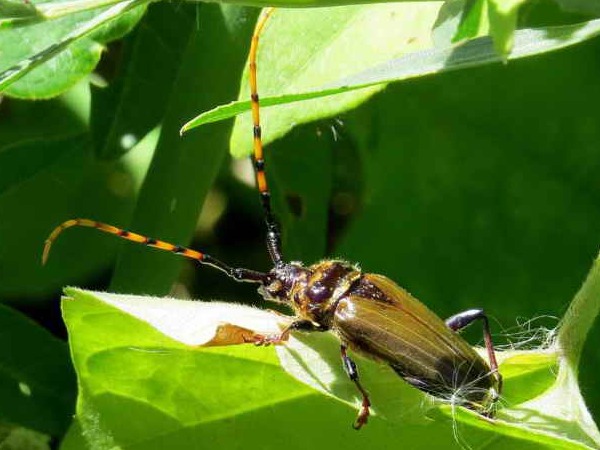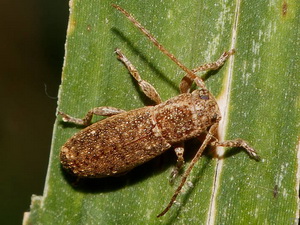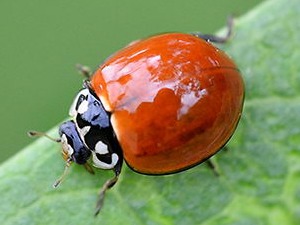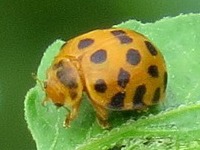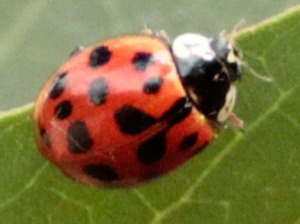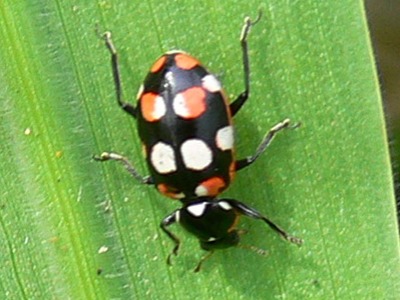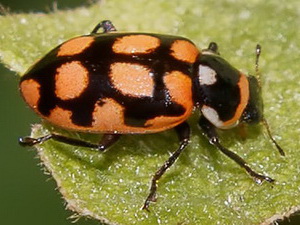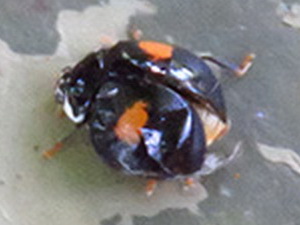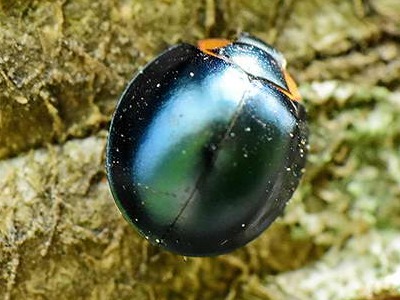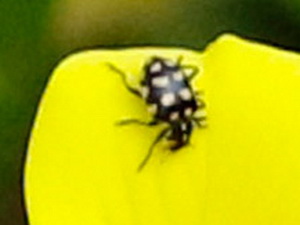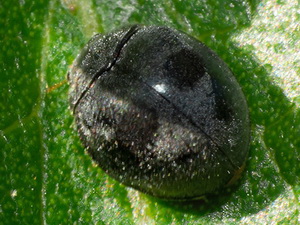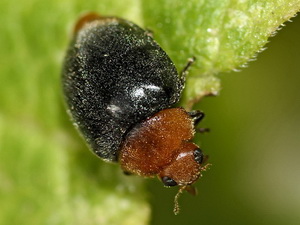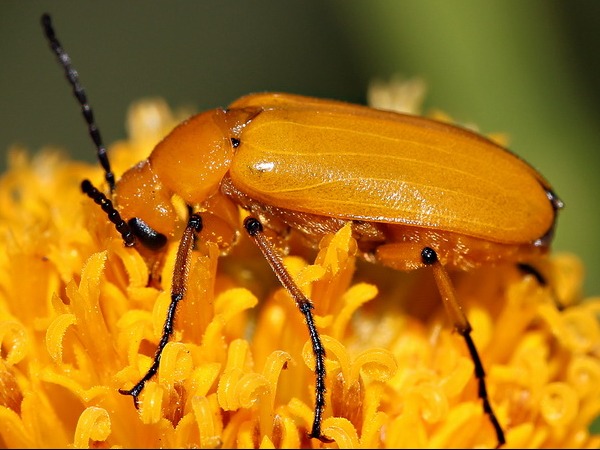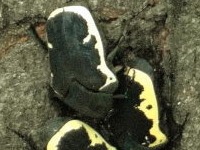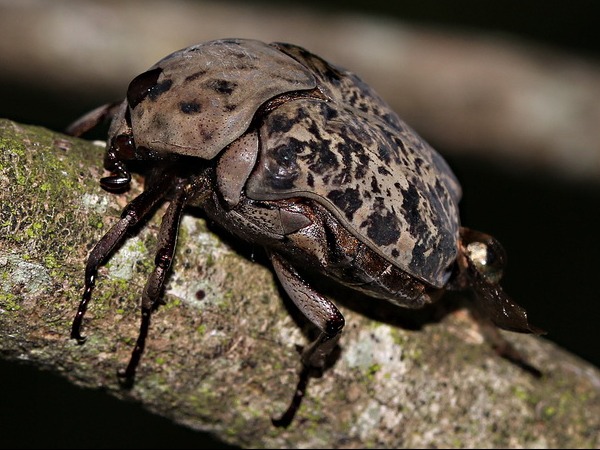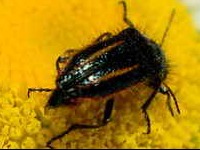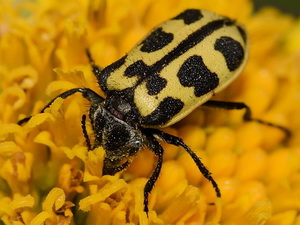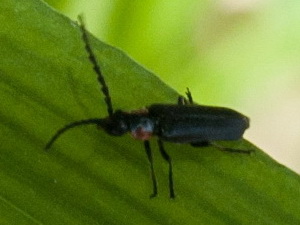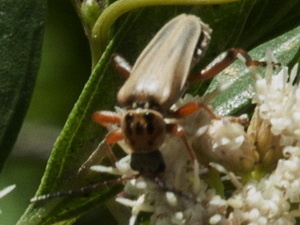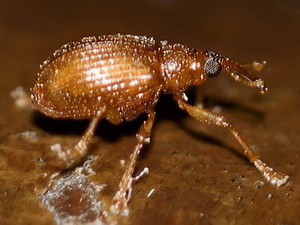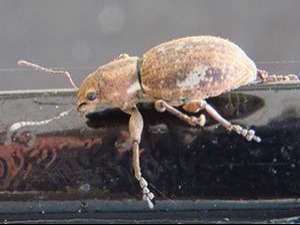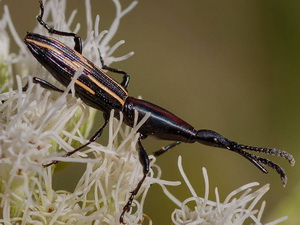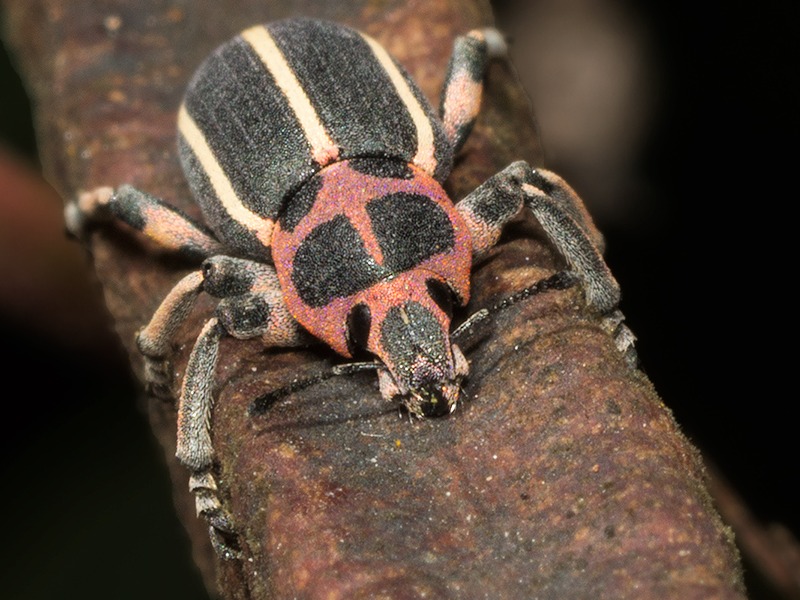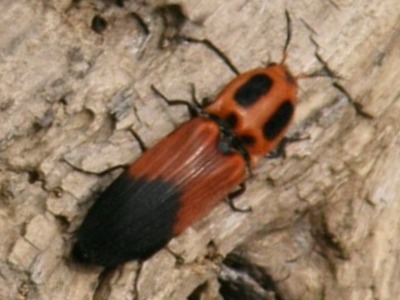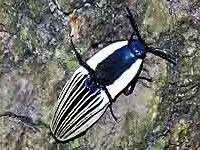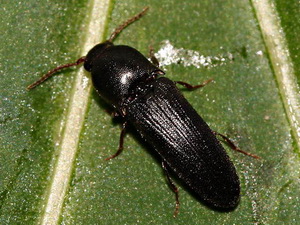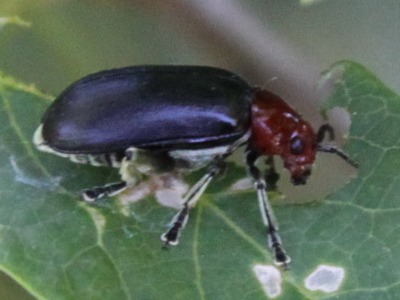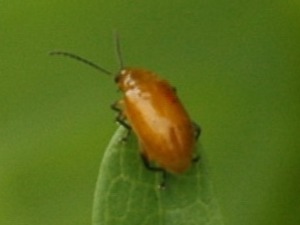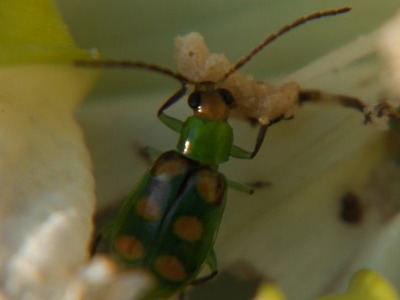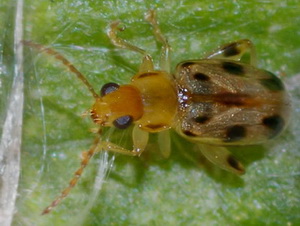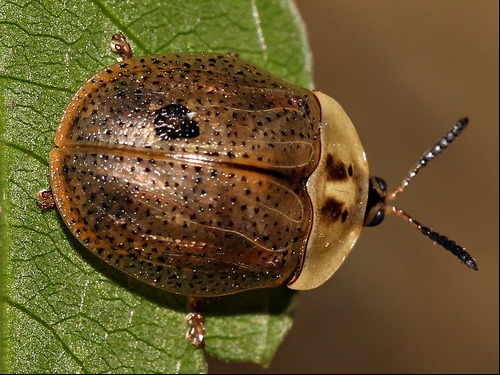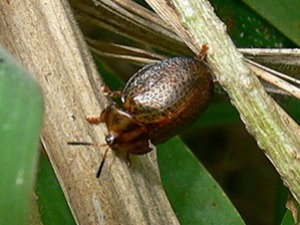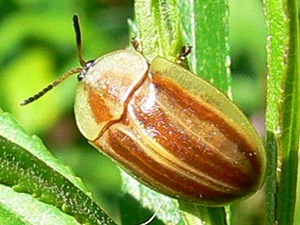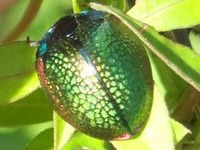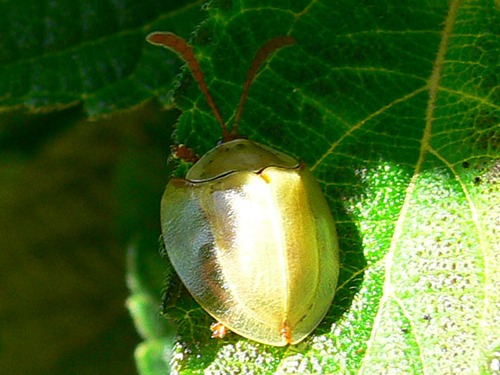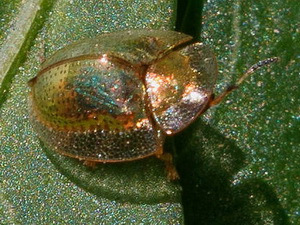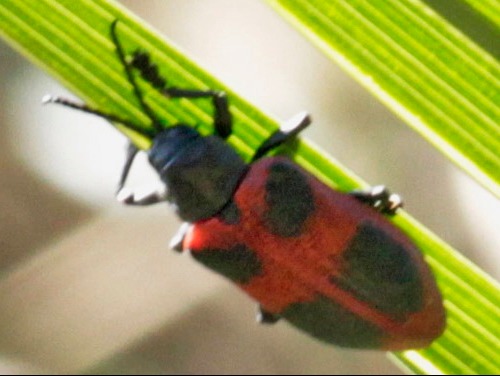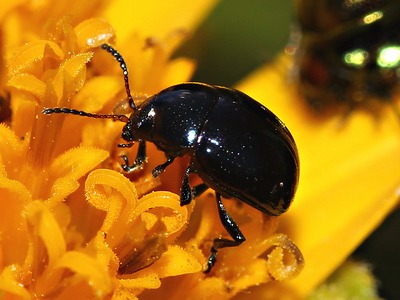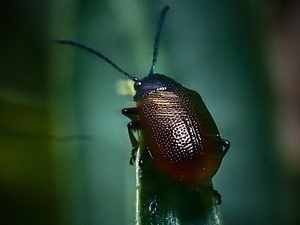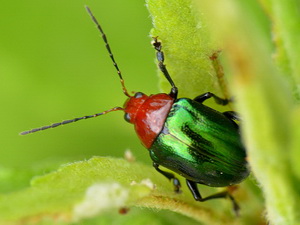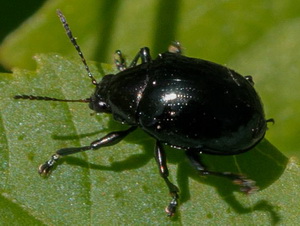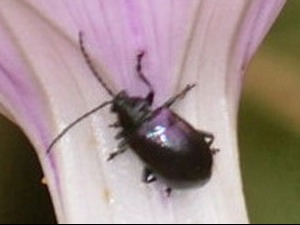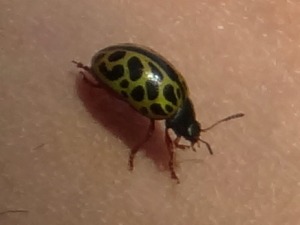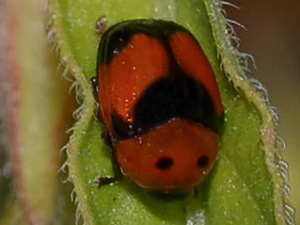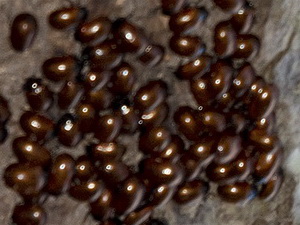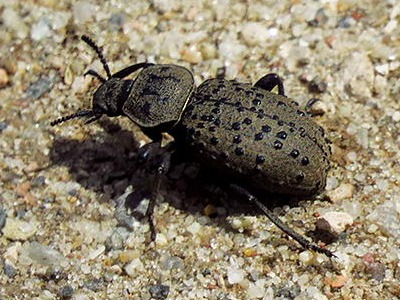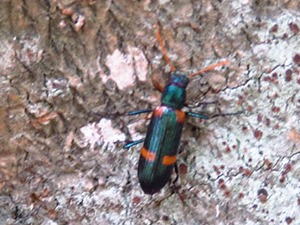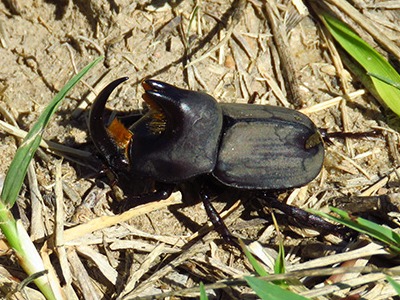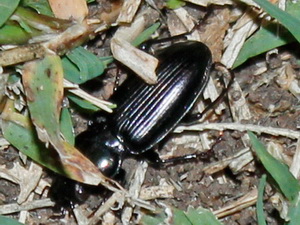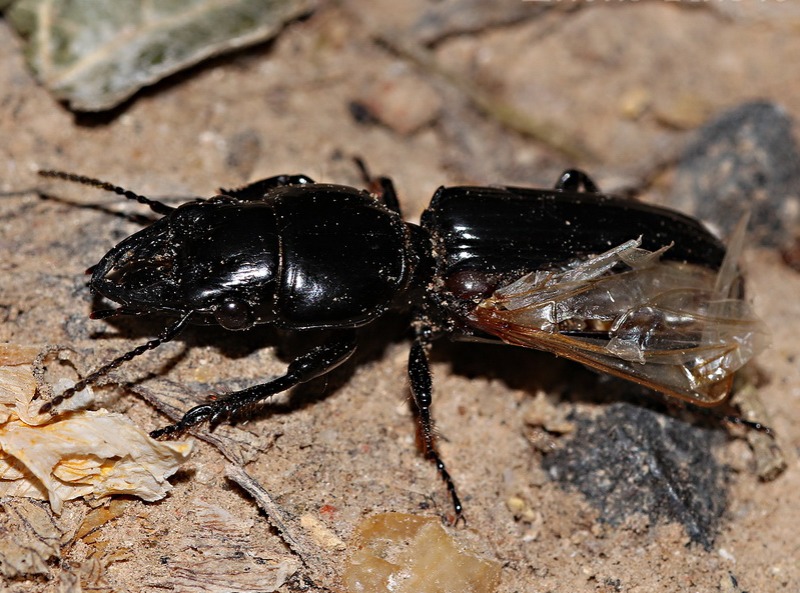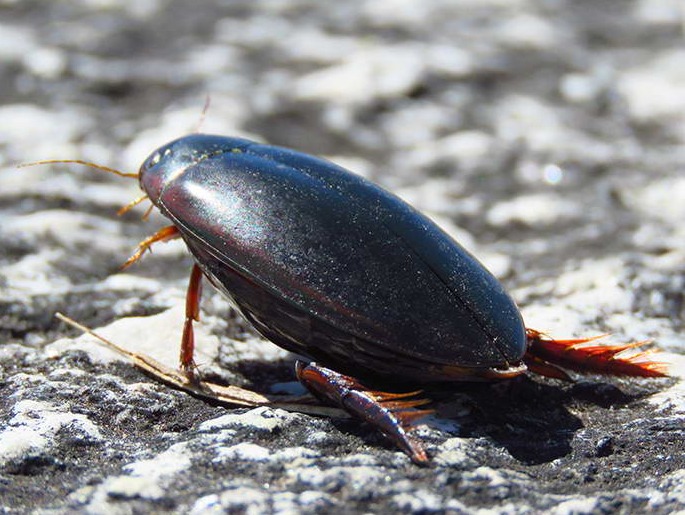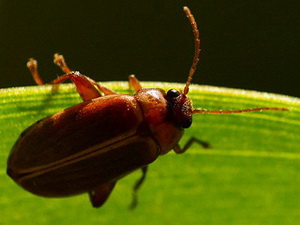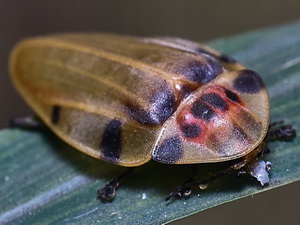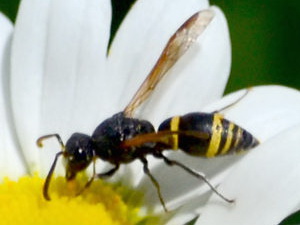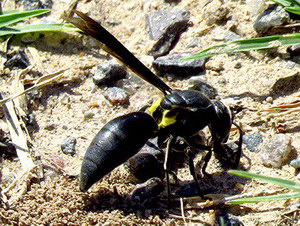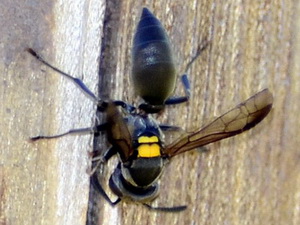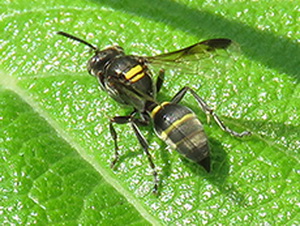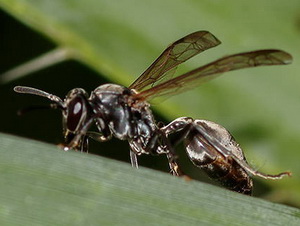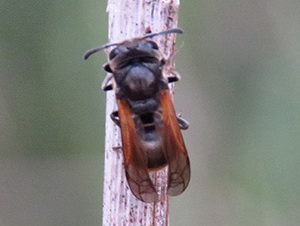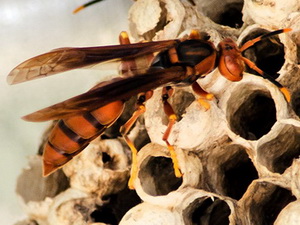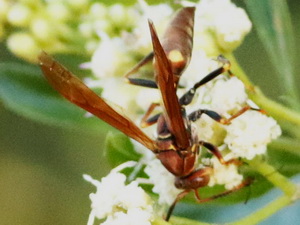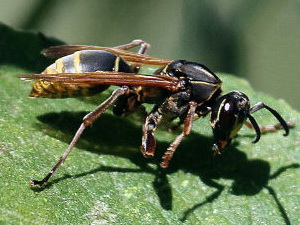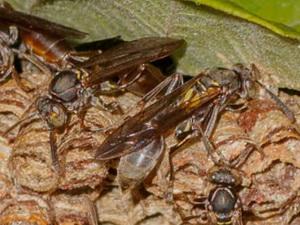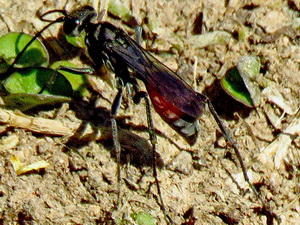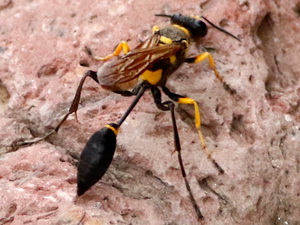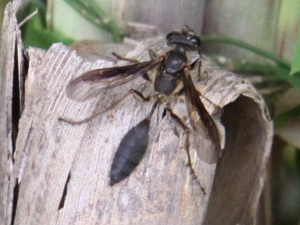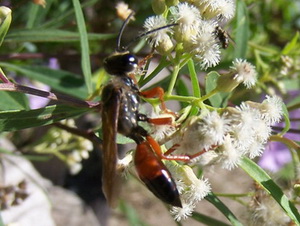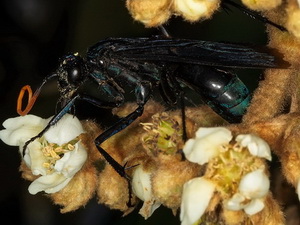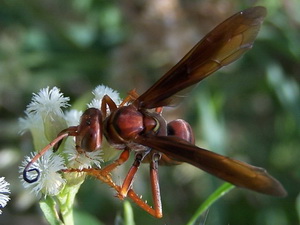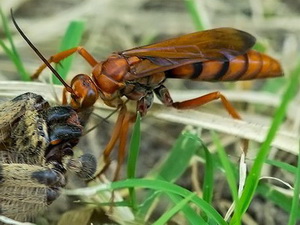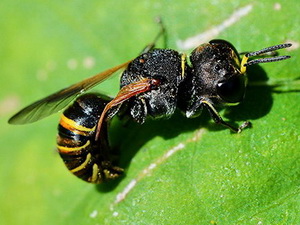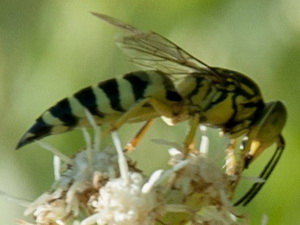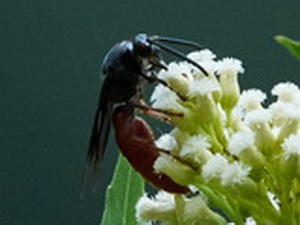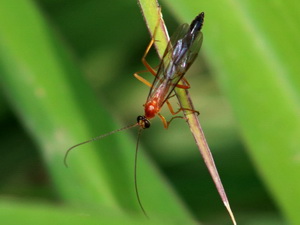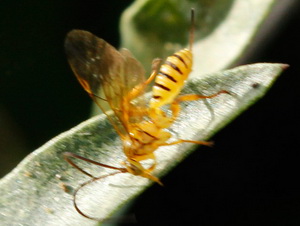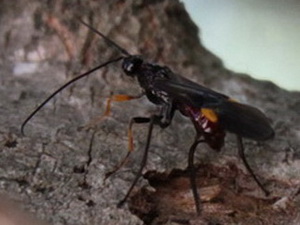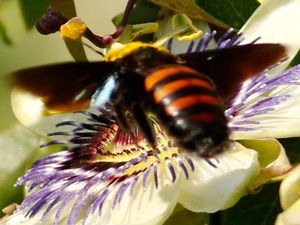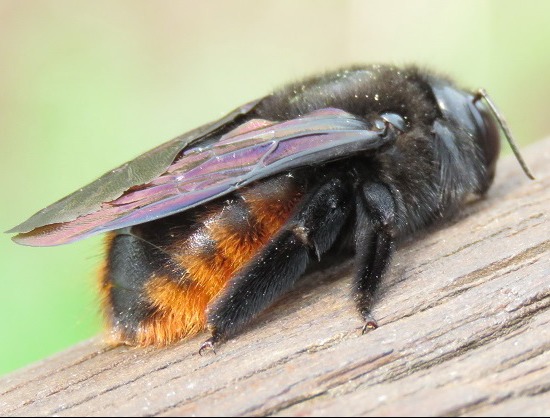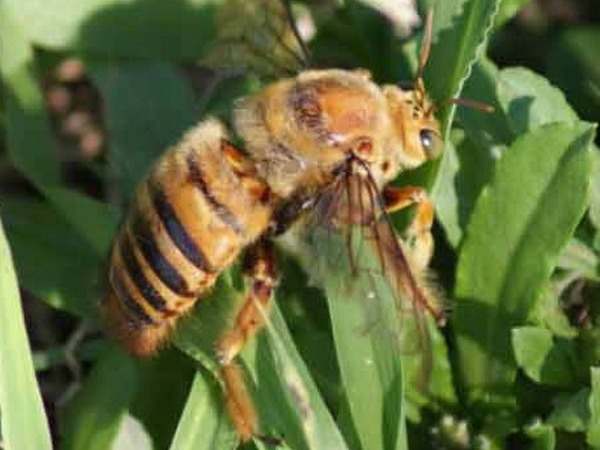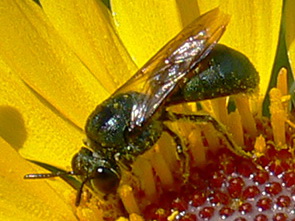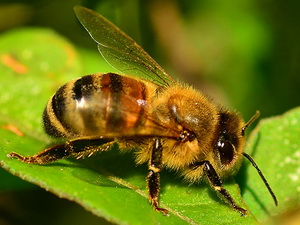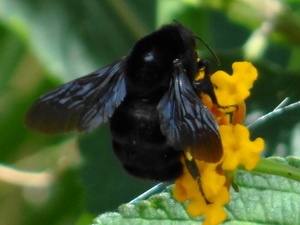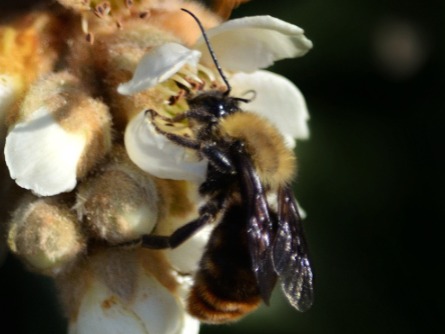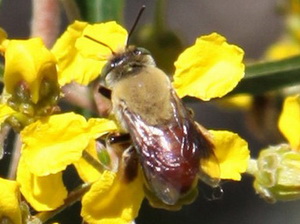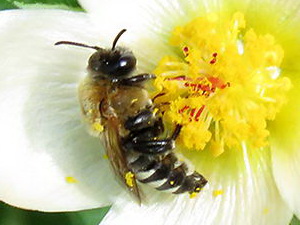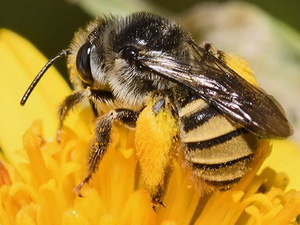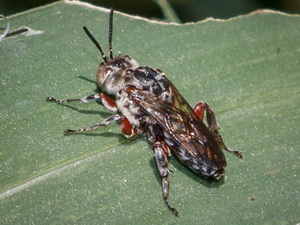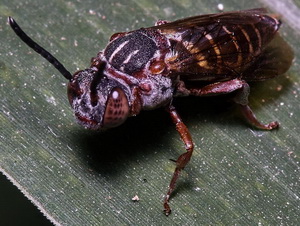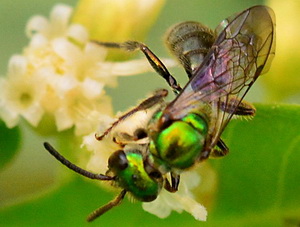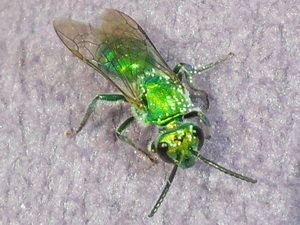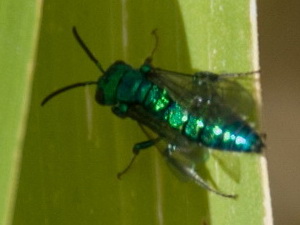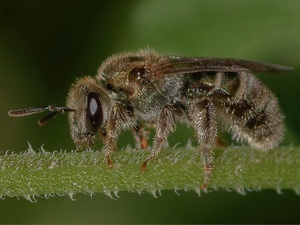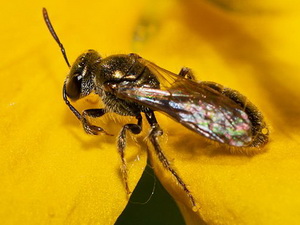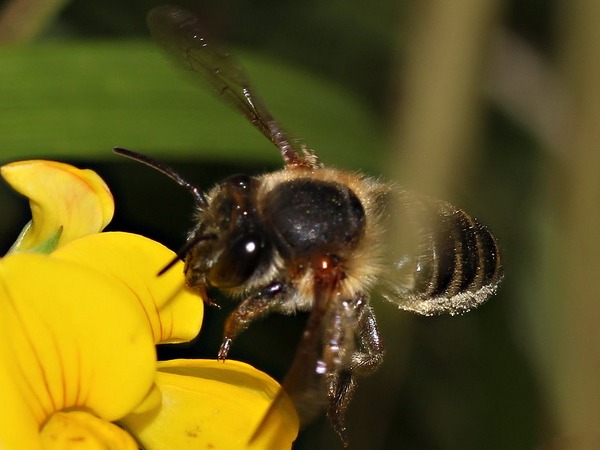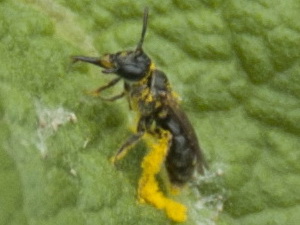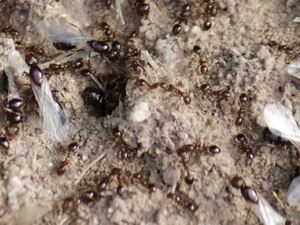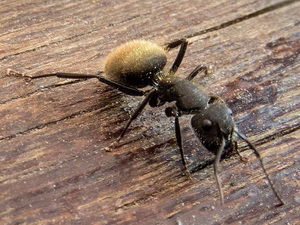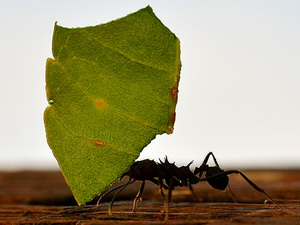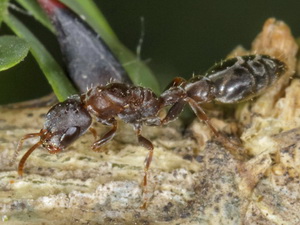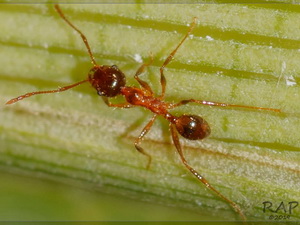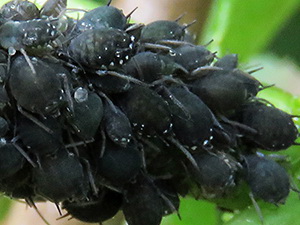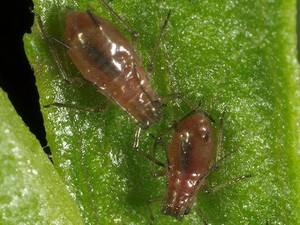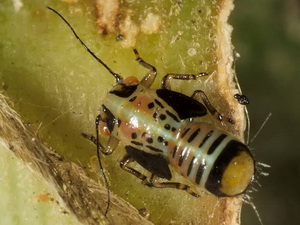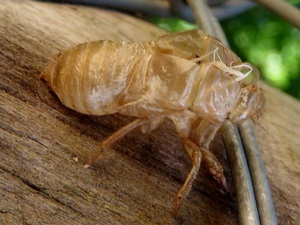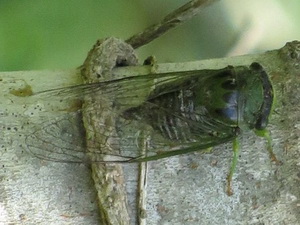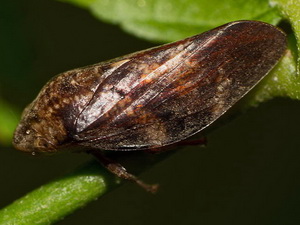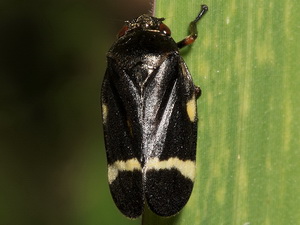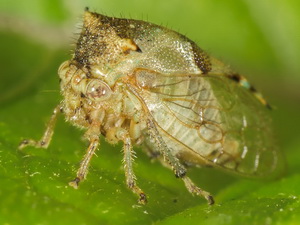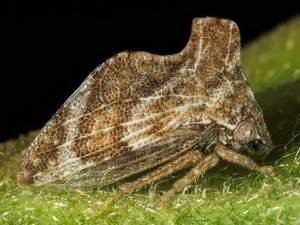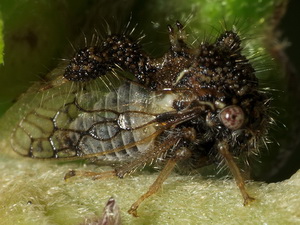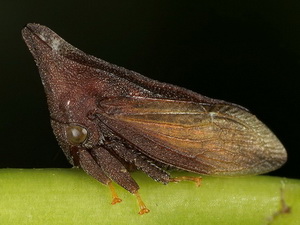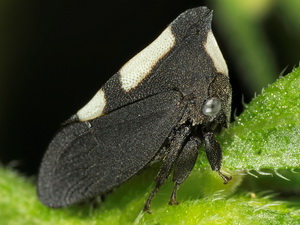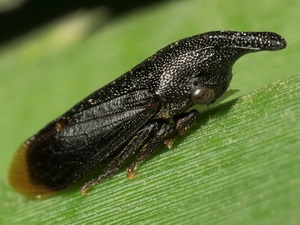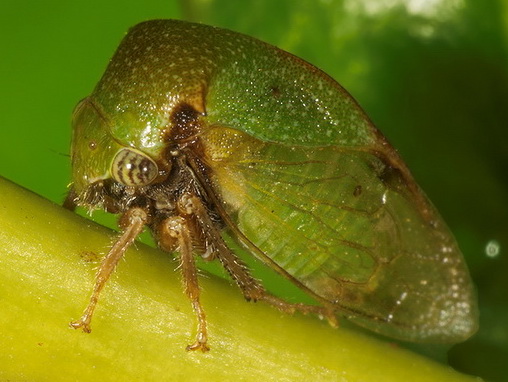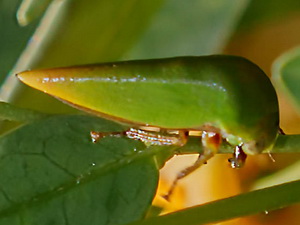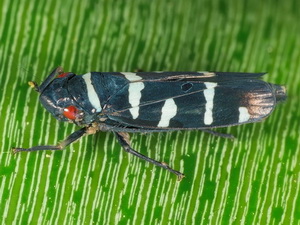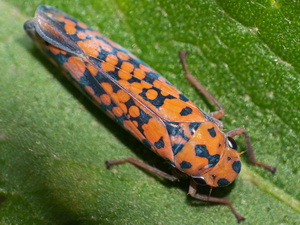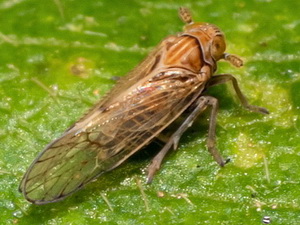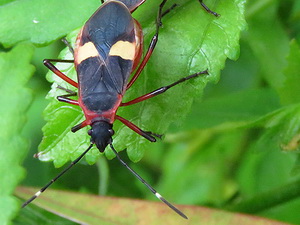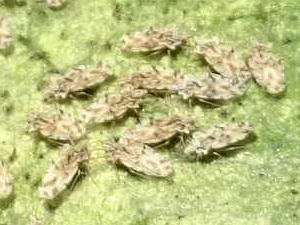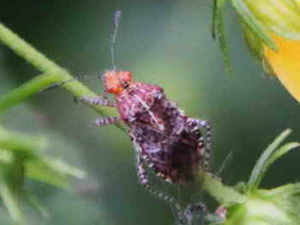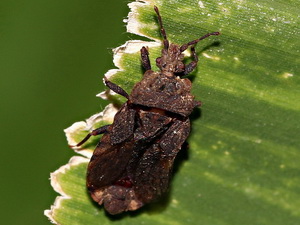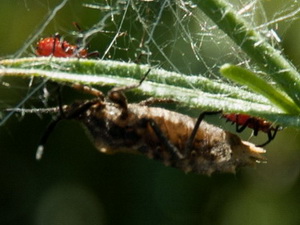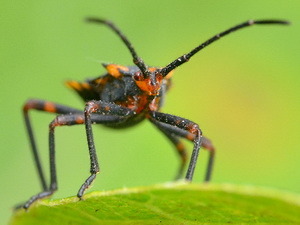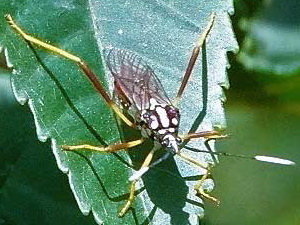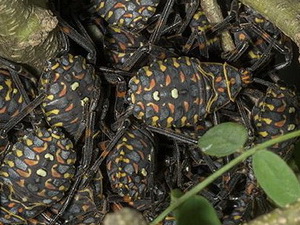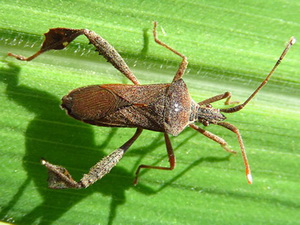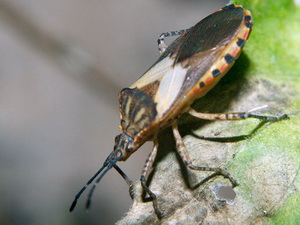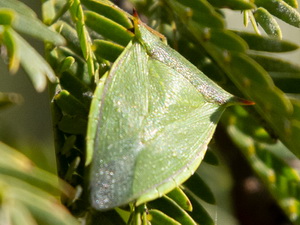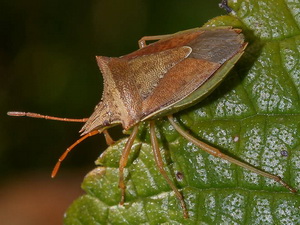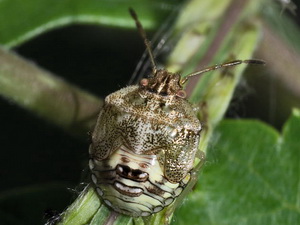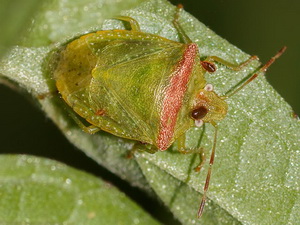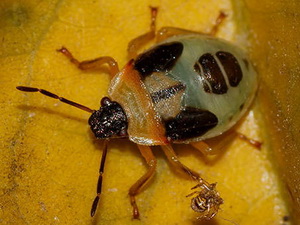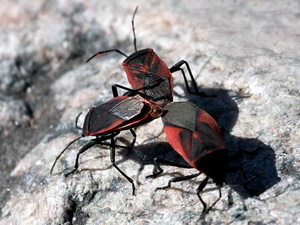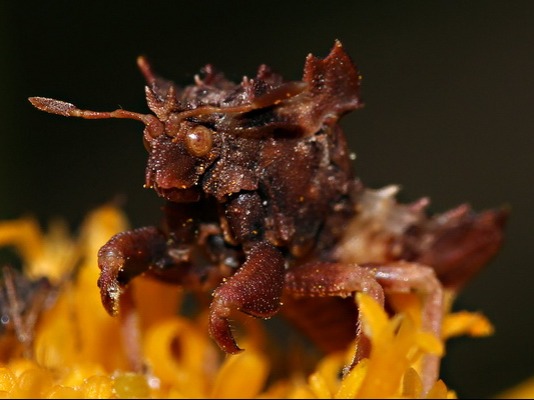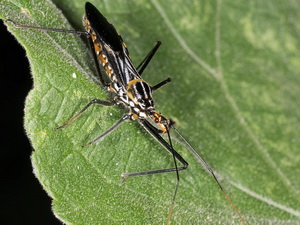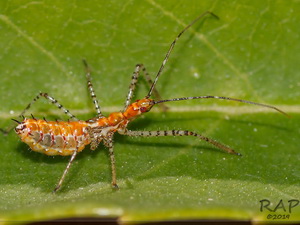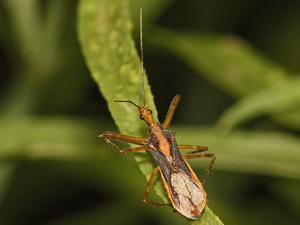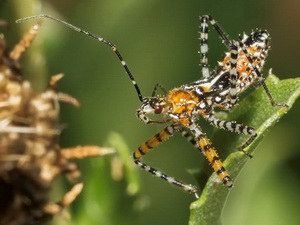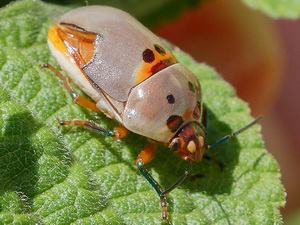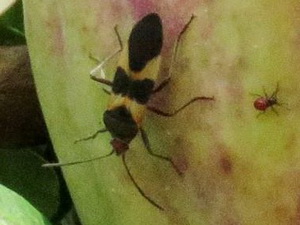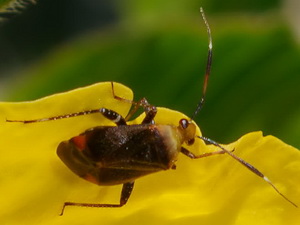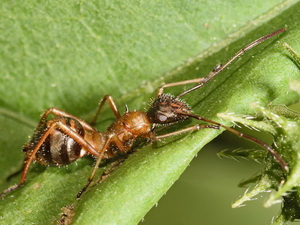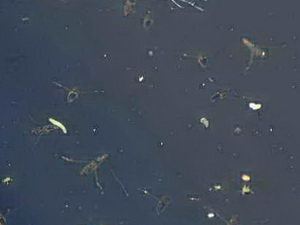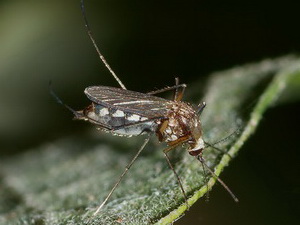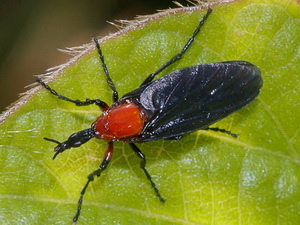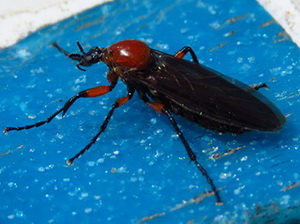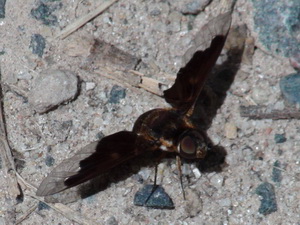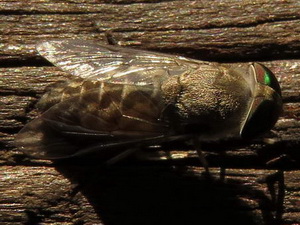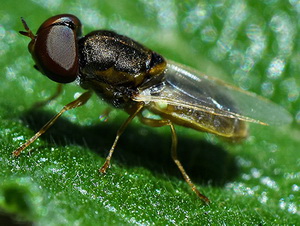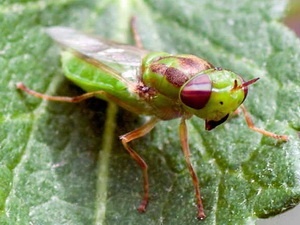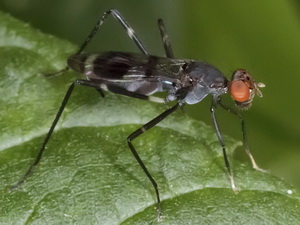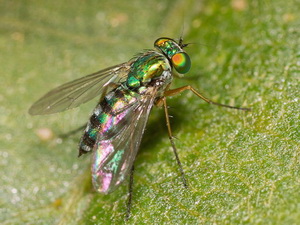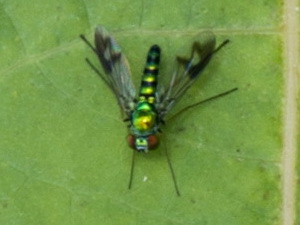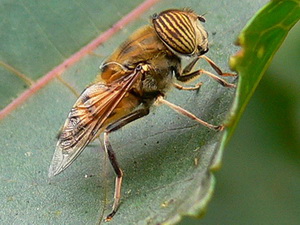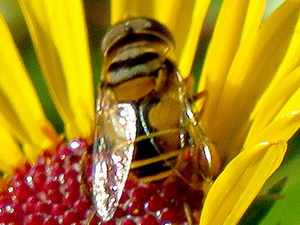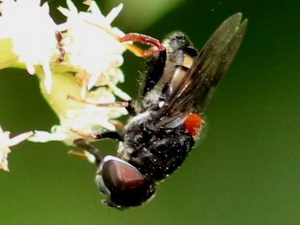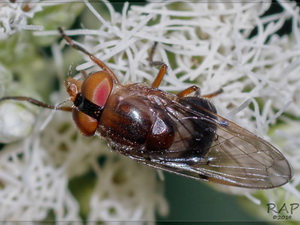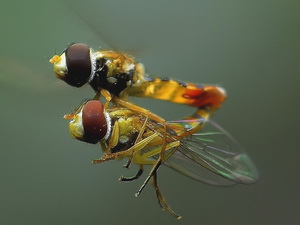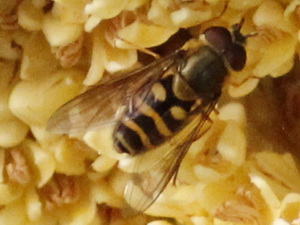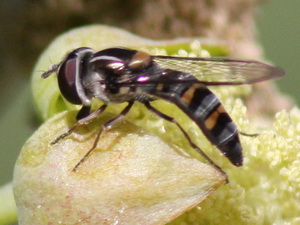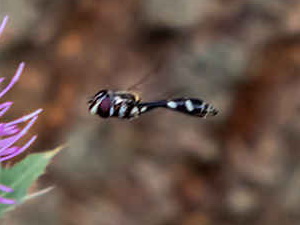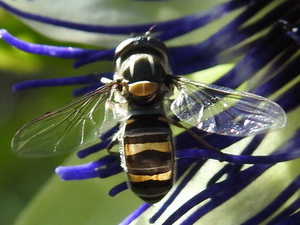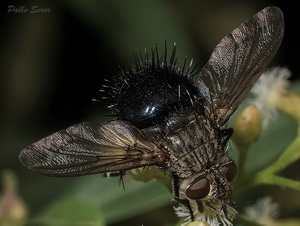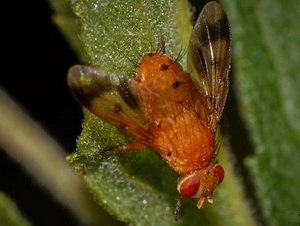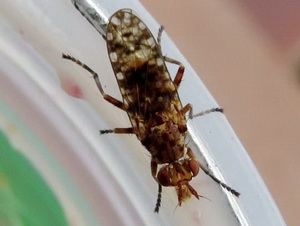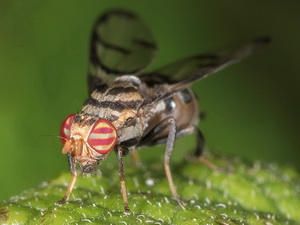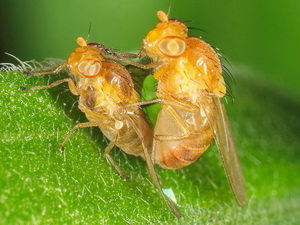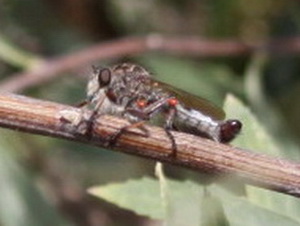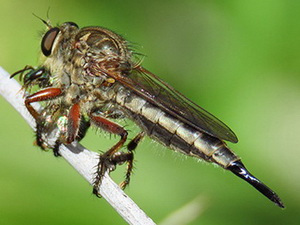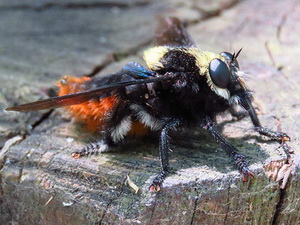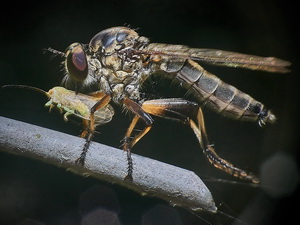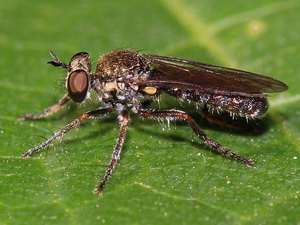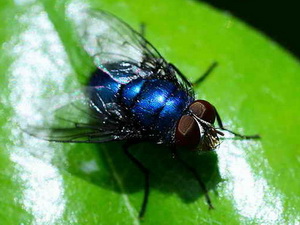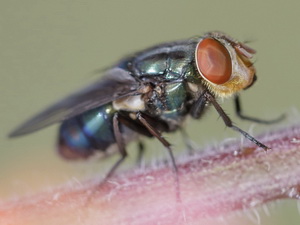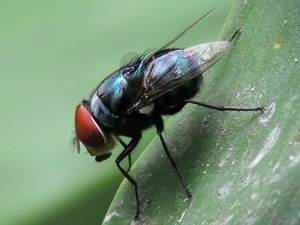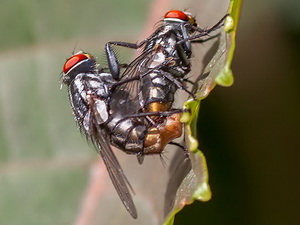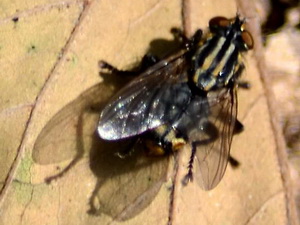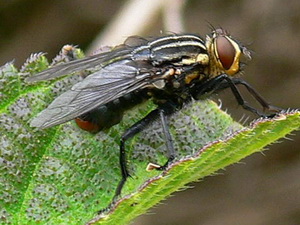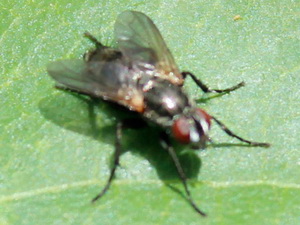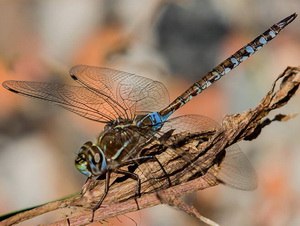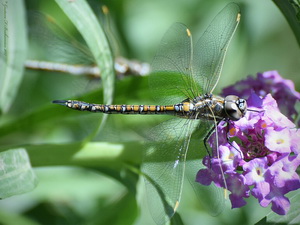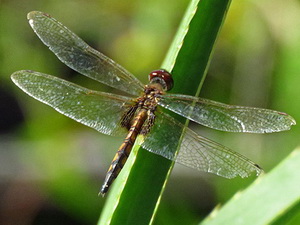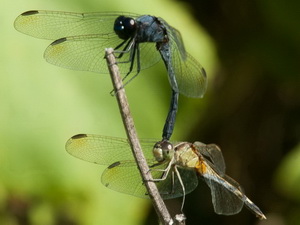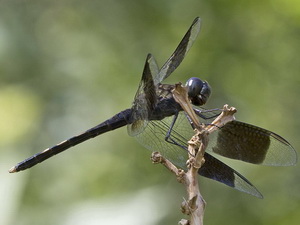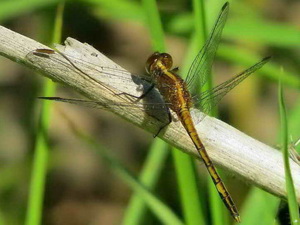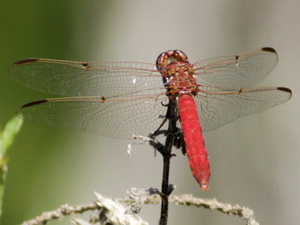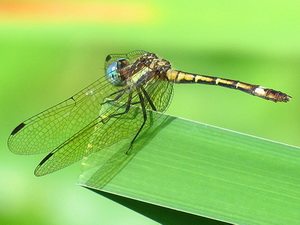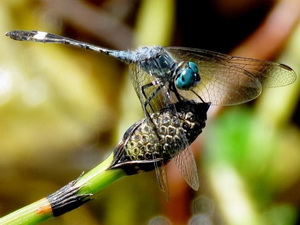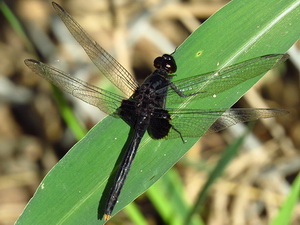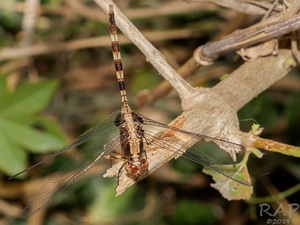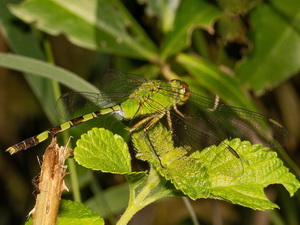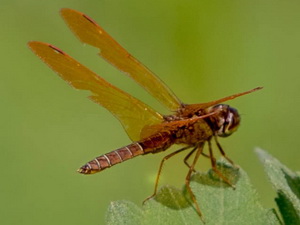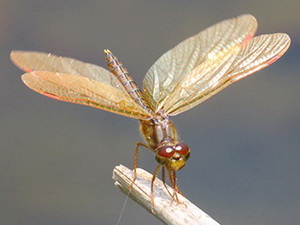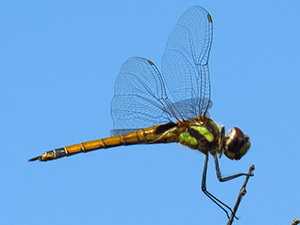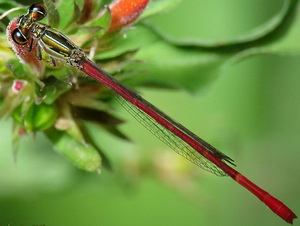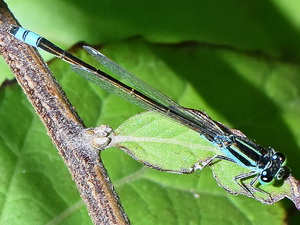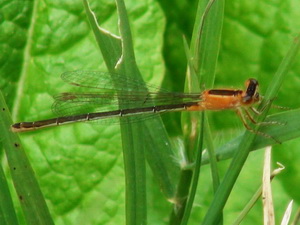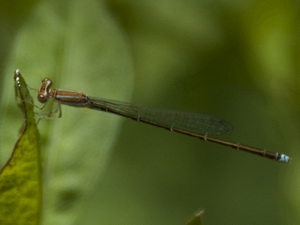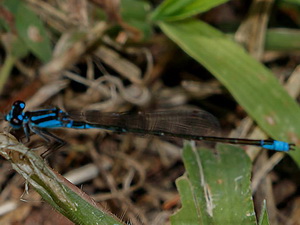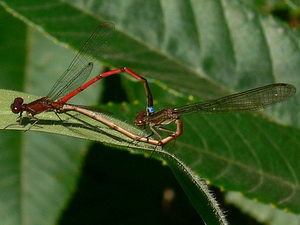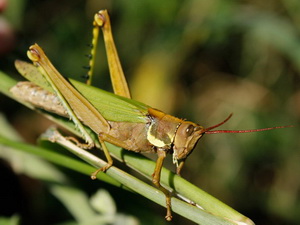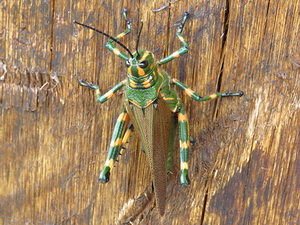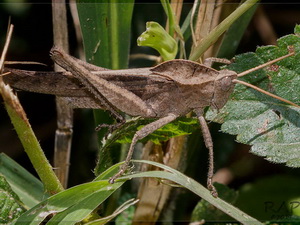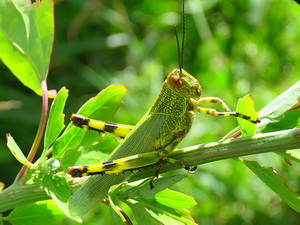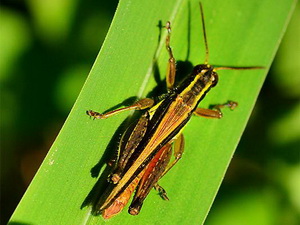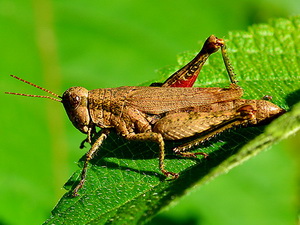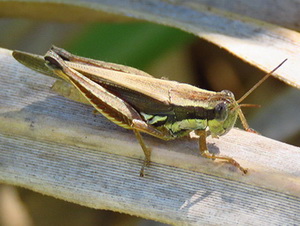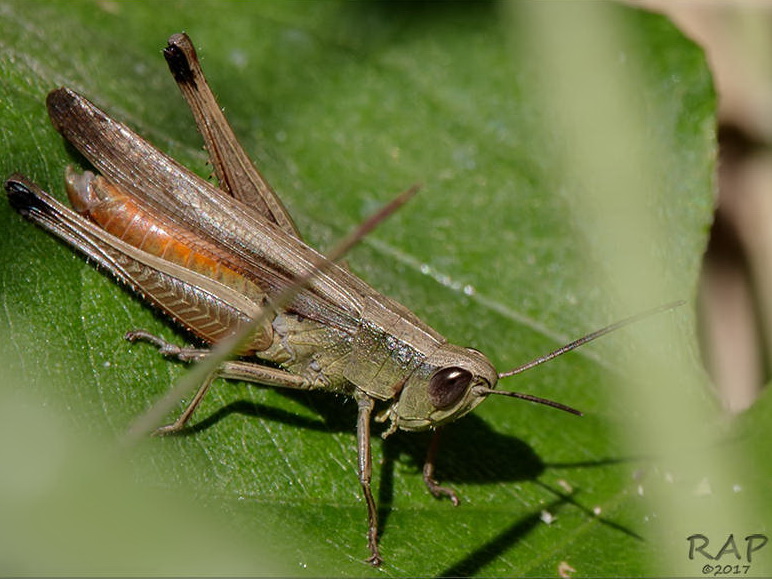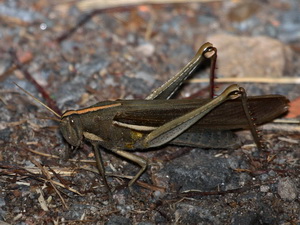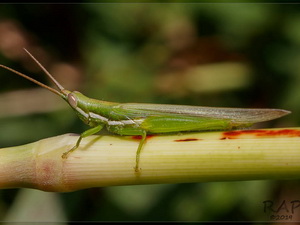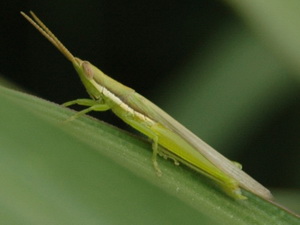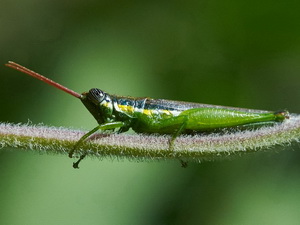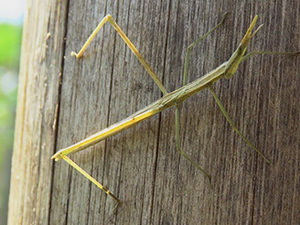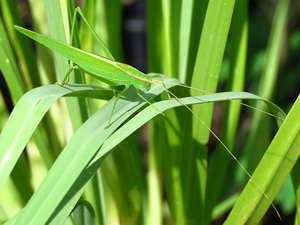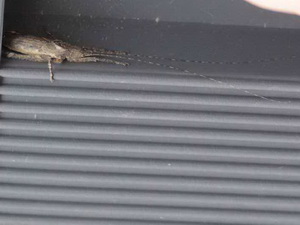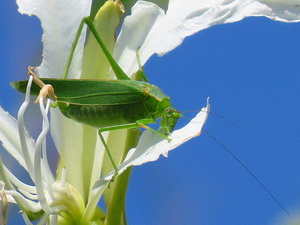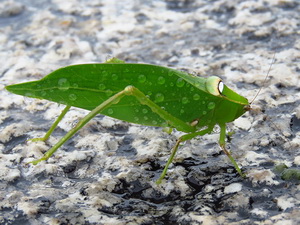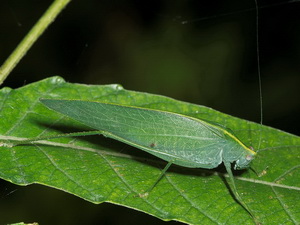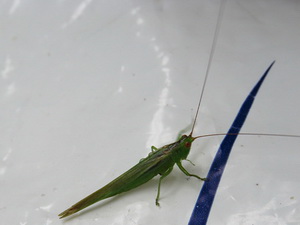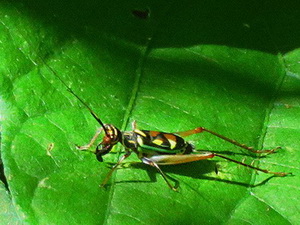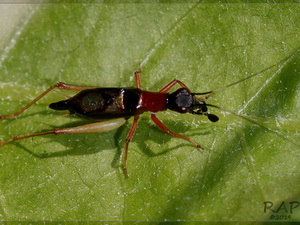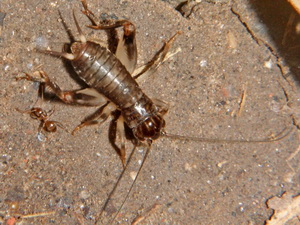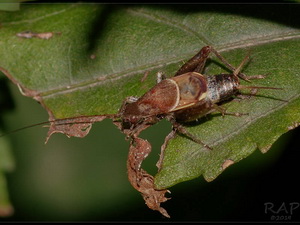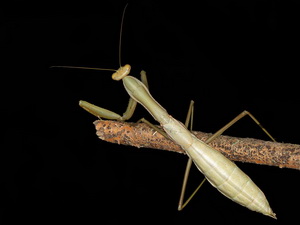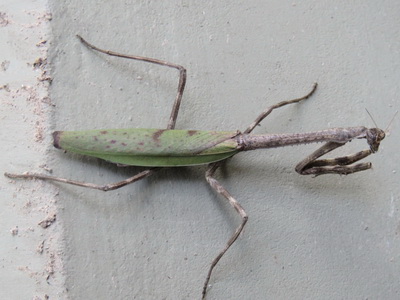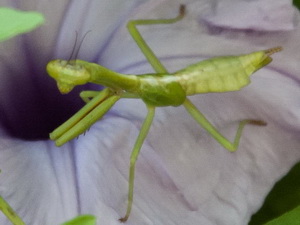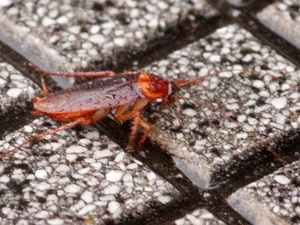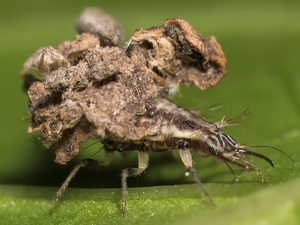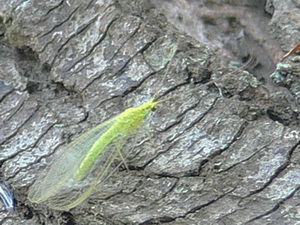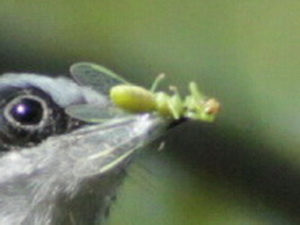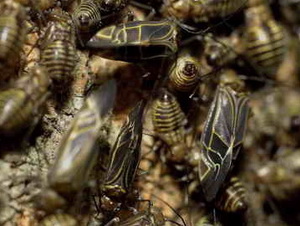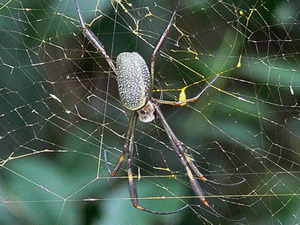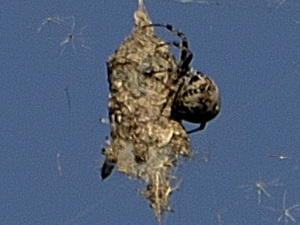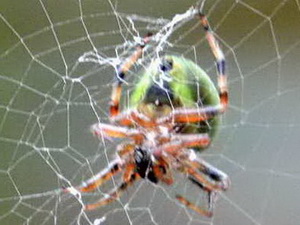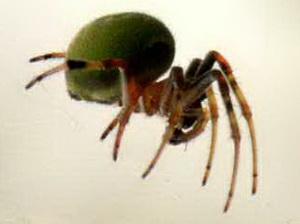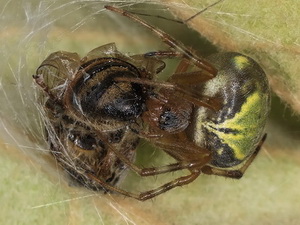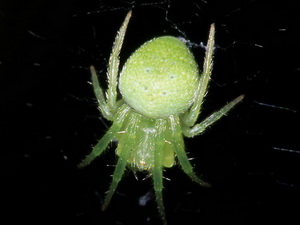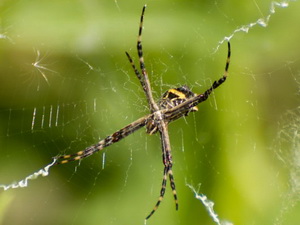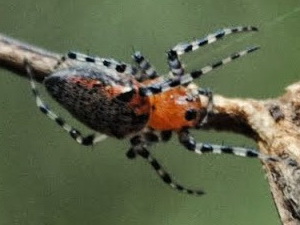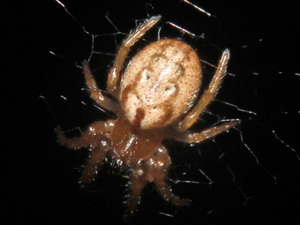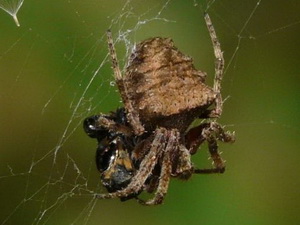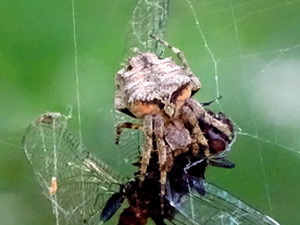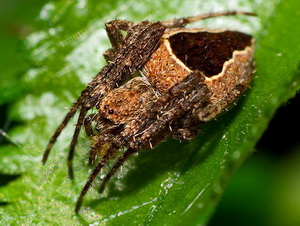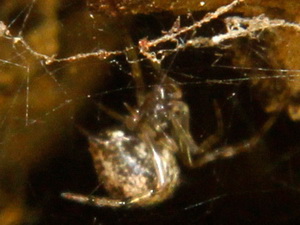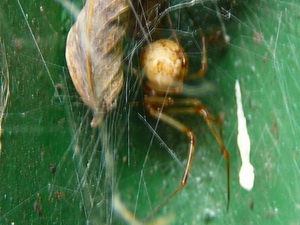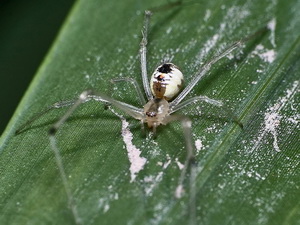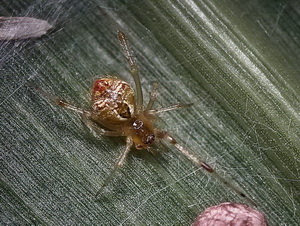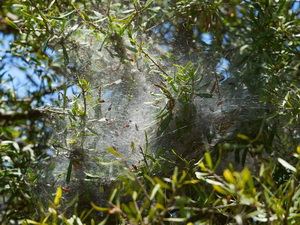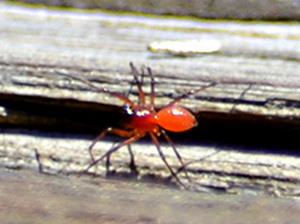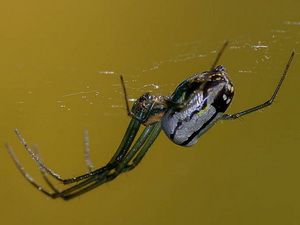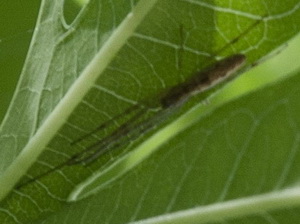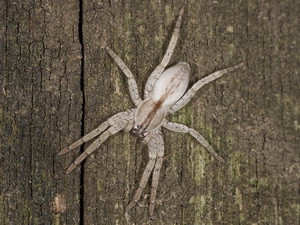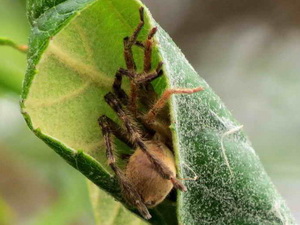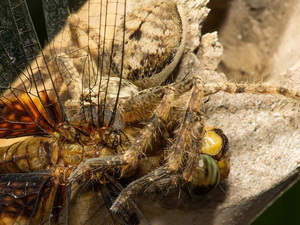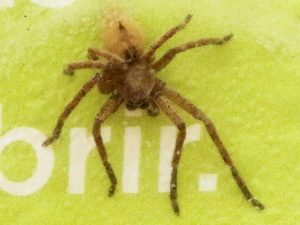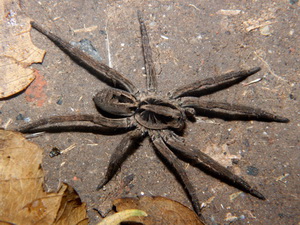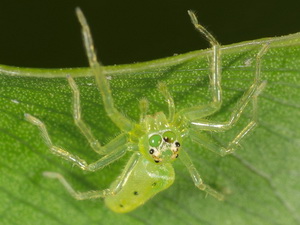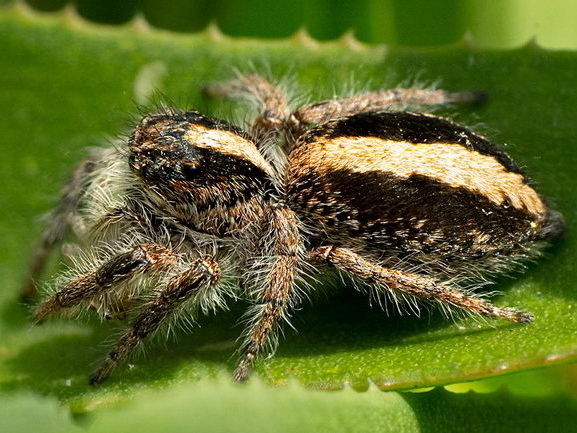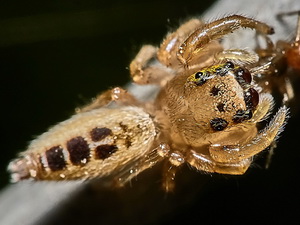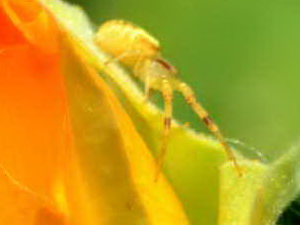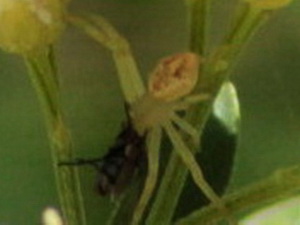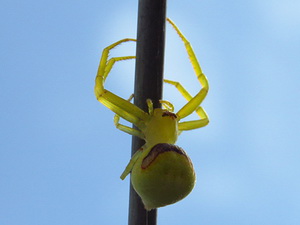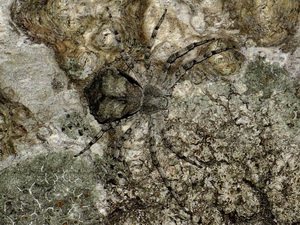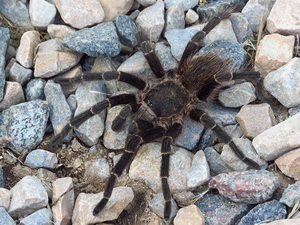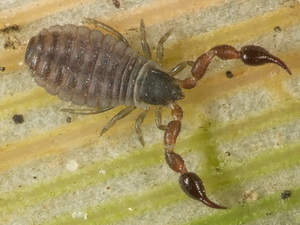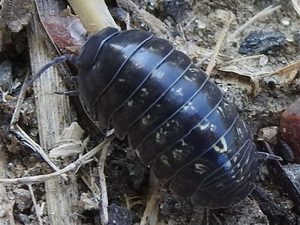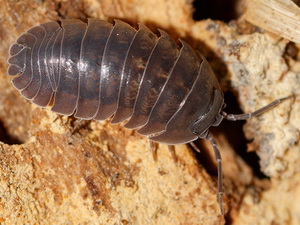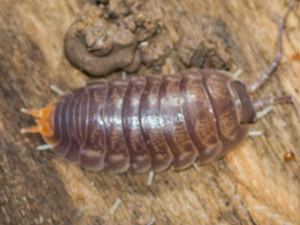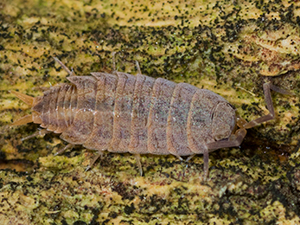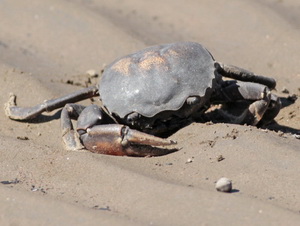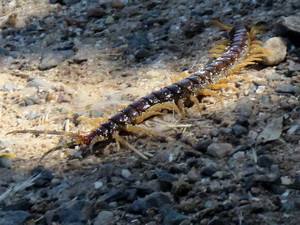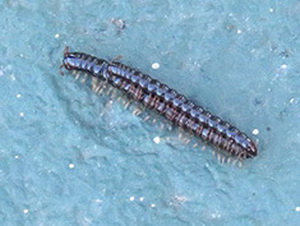Lucas Rubio collaborates in the arthropod section
My relation with insects is not very long. I am studying biology at the University of Buenos Aires and I have been taking macro photos of arthropods for some years now. Enough to get familiar with various groups of insects and the corresponding bibliography to identify them. To contact the author: [email protected]
Arthropods
Athropods have an exoskeleton and jointed appendages. In general people categorize all these animals as insects and it is a mistake. Insects are only one of the classes within arthropods. Arthropods also comprise the arachnids, the crustaceans and the miriapods. A simple way not to confuse them is to count the number of legs. Insects have three pairs of legs; arachnids, 4 pairs (and no antennae); crustaceans, 5 pairs and the miriapods, many more pairs of legs.
Insects
The primary objective of this site is to insert insects within the Costanera Sur World. To understand them as interactive components of the system, preys, predatos, polinators, etc. To reach the species level of an insect is on many occasions impossible either because the photo does not show the diagnostic character or because genitalia is required to get to this definition level.
Those who want to send photos of insects may subscribe to Artrópodos Argentinos. A group of enthusiastic entomologists help to unravel this intricate world. One of them is Gastón Zubarán who collaborated in this site and keeps doing so indirectly through Artrópodos Argentinos.
Insects have a chitinous exoskeleton, two antennae, three pairs of legs and two pairs of wings. Their body is organized in three segments or tagmata: a head, a thorax and an abdomen. It is important to bear in mind the number of legs rule not to call them insects erroneously just because they are segmented.
They are not glamorous nor do they inspire tenderness. Most people hate them. They feel repulsion and try to exterminate them by any means. They are the enemy. This is so because we only bear in mind those which cause harm or negatively affect our daily life and we do not know all the benefits they may carry directly or indirectly. The colourful butterflies and some beetles may be the exception. Only the harmful, beneficial or nice may bear a name. That is why insects have been grouped under a generic name. In this way one can associate the belonging of an insect inside a group, even if we do not know the species for certain.
They outnumber us widely. More than half of all described species and three quarters of all the animals are insects. It is said that there are 200 million insects per inhabitant and we barely perceive a few. Their small size or perfect camouflage contribute to their anonimacy. Neither does it help the behaviour of a birdwatcher who move away to see the object and overlook these small creatures when observers lose contact with plants. Nevertheless, all insects have a characteristic as inexplicable as fascinating: the curious transformation which undergo many of them turning into a completely different organism. A wingless caterpillar which devours leaves becomes a flying butterfly which laps up flowers. The entomology, the science which studies them, is a discipline in constant revision and investigation. And there is a lot to explore.
Butterflies and moths were the first insects listed on this site and they remain in a separate section. Butterflies' names in Spanish have been taken from the book "Mariposas de la Ciudad de Buenos Aires y alrededores" by Ezequiel Núñez Bustos, who collaborates in the lepidopteran section. To visit the cast of Lepidoptera click on the photo.
| Lepidoptera (Butterflies and moths) |
 |
Coleoptera (Beetles)
Long-horned beetles
Long-horned beetle
Paromoeocerus barbicornis
Long-horned beetle
Retrachydes thoracicus
Long-horned beetle
Mallodon spinibarbis
Long-horned beetle
Parmenonta maculata
Lady beetles
Lady beetle
Cycloneda sanguinea
Lady beetle
Henosepilachna vigintiooctopunctata
Multicoloured Asian Lady beetle
Harmonia axyridis
Lady beetle
Eriopis connexa
Lady beetle
Eriopis serrai
Lady beetle
Olla v-nigrum
Metallic blue lady beetle
Curinus coeruleus
Lady beetle
Coleomegilla quadrifasciata
Lady beetle
Azya luteipes
Mealybug destroyer
Cryptolaemus montrouzieri
Flower beetles
Blister beetle
Nemognatha nigrotarsata
Flower chafer
Gymnetis pudibunda
Flower chafer
Gymnetis chalcipes
Shining leaf chafer
Macraspis morio
Soft-winged flower beetle
Astylus quadrilineatus
Soft-winged flower beetle
Astylus atromaculatus
Soldier beetle
Polemius denticornis
Soldier beetle
Chauliognathus scriptus
Weevils
Snout beetles
Family Curculionidae
South American fruit tree weevil
Naupactus xanthographus
Fuller's Rose weevil
Naupuctus cervinus
Primitive weevil
Brentus rufiventris
Sesbania clown weevil
Eudiagogus episcopalis
Click beetles
Cilck beetle
Hemirriphus apicalis
Click beetle
Chalcolepidius limbatus
False click beetles
Family Eucnemidae
Leaf beetles
Leaf beetle
Cacoscelis nigripennis
Flea beetle
Parchicola sp.
Cucurbit beetle
Diabrotica speciosa
Flea beetle
Alagoasa vigintiseptemmaculata
Flea beetle
Systena novemmaculata
Tortoise beetle
Chelymorpha indigesta
Tortoise beetle
Chelymorpha sp
Tortoise beetle
Anacassis fuscata
Tortoise beetle
Stolas festiva
Tortoise beetle
Paraselenis sp
Golden tortoise beetle
Charidotella sexpunctata
Leaf beetle
Coraliomela quadrimaculata
Leaf beetle
Spintherophyta sp.
Leaf beetle
Freudeita sp.
Leaf beetle
Chalcophana sp.
Leaf beetle
Typophorus nigritus
Leaf beetle
Macrohaltica transversa
Calligrapher beetle
Calligrapha polyspila
Leaf beetle
Lexiphanes coenobita
Leaf beetle
Palgiodera erythroptera
Ground beetles
Darkling beetle
Scotobius pilularius
Darkling beetle
Strongylium decoratum
Rhino beetle
Diloboderus abderus
Ground beetles
Family Carabidae
Ground beetle
Scarites anthracinus
Water beetles
Large diving beetle
Megadytes giganteus
Marsh beetles
Family Scirtidae
Fireflies
Firefly
Aspisoma stictica
Hymenoptera (Wasps, bees and ants)
Wasps
Potter and paper wasps
Family Vespidae
Potter wasp
Monobia angulosa
Camuati wasp
Polybia scutellaris
Black paper wasp
Polybia ignobilis
Paper wasp
Brachygastra lecheguana
Paper wasp
Polistes simillimus
Paper wasp
Polistes cinerascens
Paper wasp
Mischocyttarus sp.
Thread-waisted wasps
Family Sphecidae
Mud-dauber wasp
Sceliphron asiaticum
Grass-carrying wasp
Isodontia sp.
Thread-waisted wasp
Sphex sp.
Spider wasps
Family Pompilidae
Spider wasp
Poecilopompilus sp.
Spider wasp
Tachypompilus sp.
Apoid wasps
Family Crabronidae
Scarab hunter
Scolia rufiventris
Ichneumon wasps
Family Ichneumonidae
Ichneumon wasp
Neotheronia sp.
Ichneumon wasp
Cryptanura sp.
Braconid wasps
Family Braconidae
Bees
Carpenter bee
Xylocopa frontalis
Carpenter bee
Xylocopa augusti
Carpenter bee
Xylocopa spp.
Small carpenter bee
Ceratina sp.
European honey bee
Apis mellifera
Bumblebee
Bombus bellicosus
Chimney bee
Ptilothrix sp.
Long-horned bee
Melissoptila sp.
Chimney bee cuckoo
Leiopodus lacertinus
Cuckoo bee
Doeringiella lacertinus
Sweat bees
Family Halictidae
Sweat bee
Pseudaugochlora graminea
Sweat bee
Pseudagapostemon sp.
Sweat bee
Lasioglossum sp.
Leaf cutter bee
Megachile sp.
Mining bees
Family Andrenidae
Ants
Carpenter ant
Camponotus mus
Leaf cutter ant
Acromyrmex lundii
Big-headed ant
Pheidole sp.
Hemiptera (True bugs; cicades and spittlebugs; aphids)
Sternorrhyncha
Black bean aphid
Aphis phabae
Psyllid
Platycorypha nigrivirga
Auchenorrhyncha
Cicada
Dorisiana drewseni
Spittlebug
Cephisus siccifolius
Froghopper
Notozulia entreriana
Treehoppers
Familia Membracidae
Treehopper
Cyphonia fuscata
Treehopper
Kronides incumbens
Treehopper
Stictopelta sp.
Leafhopper
Balacha melanocephala
Leafhopper
Pawiloma victima
Planthoppers
Family Delphacidae
Heteroptera
Red bug
Dysdercus albofasciatus
Cotton stainer
Dysdercus sp.
Scentless plant bug
Niesthrea sp.
Flat bugs
Family Aradidae
Leaf-footed bugs
Family Coreidae
Leaf-footed bug
Eubule sp.
Leaf-footed bug
Holhymenia histrio
Acacia bug
Pachylis argentinus
Leaf-footed bug
Leptoglossus sp.
Leaf-footed bug
Acidomeria cincticornis
Tomato stink bug
Arvelius albopunctatus.
Horn bug
Diceraeus furcatus
Stink bug
Thyanta acuminata
Stink bug
Supputius cincticeps
Black and red bug
Largus rufipennis
Jagged ambush bug
Phymata sp.
Assassin bug
Zelus leucogrammus
Assassin bug
Zelus renardii
Assassin bug
Repipta flavicans
Assassin bug
Cosmoclopius nigroannulatus
Shield-backed bug
Augocoris illustris
Seed bug
Oncopeltus unifasciatellus
Plant bug
Horciasinus argentinus
Broad-headed bugs
Family Alydidae
Backswimmers
Family Notonectidae
Diptera (flies, mosquitoes)
Nematocera (mosquitoes)
Galliniper
Psorophora sp.
Floodwater mosquito
Aedes albifasciatus
March fly
Dilophus pectoralis
Midges
Family Chironomidae
Horse flies
Family Tabanidae
Soldier flies
Family Stratiomyidae
Soldier fly
Hedriodiscus sp.
Stilt-legged fly
Paragrallomyia sp.
Long-legged flies
Family Dolichopodidae
Long-legged fly
Condylostylus sp.
Band-eyed drone fly
Eristalinus taeniops
Hoverfly
Palpada rufoscutellata
Hoverfly
Toxomerus cf. duplicatus
Hoverfly
Dioprosopa clavata
Hoverfly
Pseudoscaeva meridionalis
Bristle flies
Family Tachinidae
Bristle fly
Oestrophasia sp.
Marsh flies
Family Sciomyzidae
Fruit flies
Family Tephritidae
Robber flies
Family Asilidae
Robber fly
Efferia (s.l.) sp.
Robber fly
Mallophora ruficauda
Robber fly
Atoniomyia sp.
Blow fly
Chrysomya megacephala
Flesh fly
Oxysarcodexia paulistanensis
Flesh fly
Oxysarcodexia varia.
Flesh fly
Oxysarcodexia sp.
Grizzled woodlouse fly
Stevenia deceptoria
Odonata (Dragonflies and damselflies)
Dragonflies
Dragonfly
Rhionaeschna bonariensis
Dragonfly
Rhionaeschna absoluta
Dragonflies
Family Libellulidae
Dragonfly
Erythrodiplax nigricans
Dragonfly
Erythrodiplax umbrata
Dragonfly
Erythrodiplax sp.
Dragonfly
Orthemis nodiplaga
Dragonfly
Micrathyria hypodidyma
Dragonfly
Micrathyria sp.
Dragonfly
Erythemis attala
Dragonfly
Erythemis plebeja
Dragonfly
Erythemis vesiculosa
Dragonfly
Perithemis tenera
Damselflies
Damselfly
Telebasis willinki
Damselfly
Ischnura fluviatilis
Damselfly
Argentagrion ambiguum
Damselfly
Homeoura chelifera
Damselfly
Oxyagrion terminale
Orthoptera (locusts and crickets)
The Order Orthoptera is composed of two groups: Ensifera and Caelifera. In general terms they are known as locusts and crickets respectively.
They are hemimetabolous insects. They undergo different stages, but they look like their parents since they are born.
If crickets and locusts are famous for something is for their ability to jump. Of the three pairs of legs only the posterior one, which is very strong, is designed for jumping. It has springs which together with the muscle accumulate the energy which is released when the insect is eyected. They use jumping as a way of escape, fight or a simple way of moving.
Another characteristic typcal of this order are the sounds produced by rubbing body parts. In crickets the stridulating mechanism is on the forewings. In locusts it may be on the wings or on the legs. Song is used in pair formation or as an indication of allarm or aggression.
A good song needs a good ear and the location of the ear also differs in locusts and crickets. The crickets' "ear" is on the frontal tibia and the locusts' on the first abdominal segment.
The more basic difference between these two groups is the length of the antennae. Crickets have more than 30 segments and locusts less than that. Roughly speaking, long antennae is a cricket, short antennae is a locust.
Ensifera's ovipositor is scimitar-like or cylindrical. It is inserted in vegetal tissues or the ground (respectively) to lay eggs. In general eggs are laid separately. Caelifera's ovipositor is short and dented. They dig a hole and introduce the ovipositor which elongates doubling almost its size thanks to specialized muscles.
Caelifera
Lubber grasshopper
Coryacris angustipennis
Lubber grasshopper
Chromacris speciosa
Lubber grasshopper
Xyleus discoideus
Lubber grasshopper
Zoniopoda tarsata
Short-horned grasshoppers
Family Acrididae
Spur-throated grasshopper
Ronderosia bergii
Spur-throated grasshopper
Dichroplus elongatus
Slant-faced grasshopper
Amblytropidia australis
Yellow-lined Grasshopper
Schistocerca flavosciata
Spur-throated grasshopper
Tucayaca gracilis
Spur-throated grasshopper
Tucayaca sp.
Spur-throated grasshopper
Stenopola puncticeps
Stick grasshoppers
Family Procospiidae
Ensifera
Long-horned katydid
Hyperophora sp
Leaf katydid
Dasyscelus normalis
Leaf katydid
Ligocatinus spinatus
Long-horned katydid
Stilpnochlora sp.
Yellow-lined katydid
Grammadera clara
Lesser meadow katydid
Conocephalus longipes
Sword-tailed cricket
Phylloscyrtus amoenus
Sword-tailed-cricket
Cranistes colliurides
Subterranean cricket
Anurogryllus sp.
Mantodea (mantids)
Mantid
Pseudovates iheringi
Mantid
Parastagmatoptera sp.
Blattodea (cockroaches)
American cockroach
Periplaneta americana
Neuroptera (lacewings)
Lacewings
Family Chrysopidae
Green lacewing
Chrysoperla externa
Minute green mantidfly
Zeugomantispa minuta
Psocoptera (barklice)
Barklice
Cerastipsocus sp.
Arachnids
Arachnids are as difficult as insects. You can find help in the indentification or important information in Reivindicando a las arañas (Vindicating the spiders).
The arachnids (spiders, scorpions and mites) have a body organized in two segments or tagmata (a cephalothorax and an abdomen), four pairs of legs, a pair of chelicerae and a pair of pedipalps. Generally they are erroneously considered insects If people dislike insects, spiders take the worst part. There is a phobia which is reinforced by a ruthless image of spiders. To come across a web causes excessive panic. Nevertheless, in most cases they are timid and avoid our presence. Not all of them weave a web, but all of them produce a silk thread which may have different functions. They are of immense benefit to man since they catch lots of insects.
Web-spinning spiders
Golden Silk Orbweaver
Trichonephila clavipes
Orb weaver
Araneus lathyrinus
Orb weaver
Araneus workmani
Orb weaver
Araneus uniformis
Silver argiope
Argiope argentata
Red spider weaver
Alpaida gallardoi
Orb weaver
Parawixia audax
Cobweb spiders
Family Theridiidae
Cobweb spider
Tidarren sisyphoides
Cobweb spider
Theridion sp.
Cobweb spider
Cryptachaea sp.
Social cobweb spider
Anelosimus sp.
Dwarf spiders
Family Linyphiidae
Long-jawed orbweaver
Leucauge sp.
Long-jawed orbweaver
Tethragnatha sp.
Hunting spiders
Ghost spider
Arachosia praesignis
Giant crab spider
Polybetes pythagoricus
Giant crab spider
Polybetes rapidus
Giant crab spider
Polybetes sp.
Wolf spider
Lycosa erythrognatha
Jumping spider
Lyssomanes sp.
Jumping spider
Megafreya sutrix
Jumping spider
Cotinusa vittata
Crab spiders
Familia Thomisidae
Crab spider
Misumenops sp.
Crab spider
Misumenops callinurus
Running crab spider
Fageia sp.
Misiones tarantula
Vitalius roseus
FALse scorpions
PSEUDOSCORPIONIDA
Crustaceans
Unlike insects and spiders, the crustaceans have a good reputation. As they are primarily aquatic we have no contact with them. On the ohter hand, the are well appreciated as food.
The crustaceans have a body protected by a calcareous exoskeleton and is divided into two or three segments depending on whether the head is fused to the thorax, in which case the cephalothorax is formed, and the abdomen. They have two pairs of antennae and one pair of mandibles. As the number of legs goes they may be decapods (five pairs of legs) or may have several legs
ISOPODA
Pill bug
Armadillidium vulgare
Pill bug
Armadillidium nasatum
Sow bug
Cylisticus convexus
Sowbug
Porcellionides sexfasciatus
DECAPODA
Red crab
Dilocarcinus pagei
Myriapods
The myriapods include all the animals which are commonly called centipedes and millipedes and which are recognized by their highly segmented bodies with too many legs. The centipedes comprise scolopendrids.
To tell apart a centipede from a millipede is easy. Pay attention to the number of legs at each segment. If there are four (two on each side of the segment) it is a millipede. Otherwise, one leg at each segment makes it a centipede. Another clue is their behaviour before a threat. The centipede escapes, whereas the millipede rolls up and stays quiet or protects itself by secreting some toxic or irritating chemical. A third clue is the disposition of the legs which spread away in centipedes and fall to the ground in millipedes.
The myriapods live only on land. Most of millipedes prefer humid places since their exoskeleton lacks a waxy layer which retains water. The centipedes may be found in all hábitats, including deserts where the largest species are encountered. The centipedes are predators and hunt primarily at night They feed on other invertebrates. The millipedes mainly eat rotting organic matter.
They are not considered dangerous to man, but you should always take special care. The bite of the largest millipede species may cause discomfort such as, vomitting, fever, etc. The millipedes do not bite but they secrete poisons though in rather small quantities for us to casuse an alarm. Anyway, it is advisable to wash thoroughly.
CEntipedes
SCOLOPENDRIDA
Scolopendrids
Family Scolopendridae
Millipede
POLYDESMIDA
Greenhouse millipede
Oxidus gracilis
